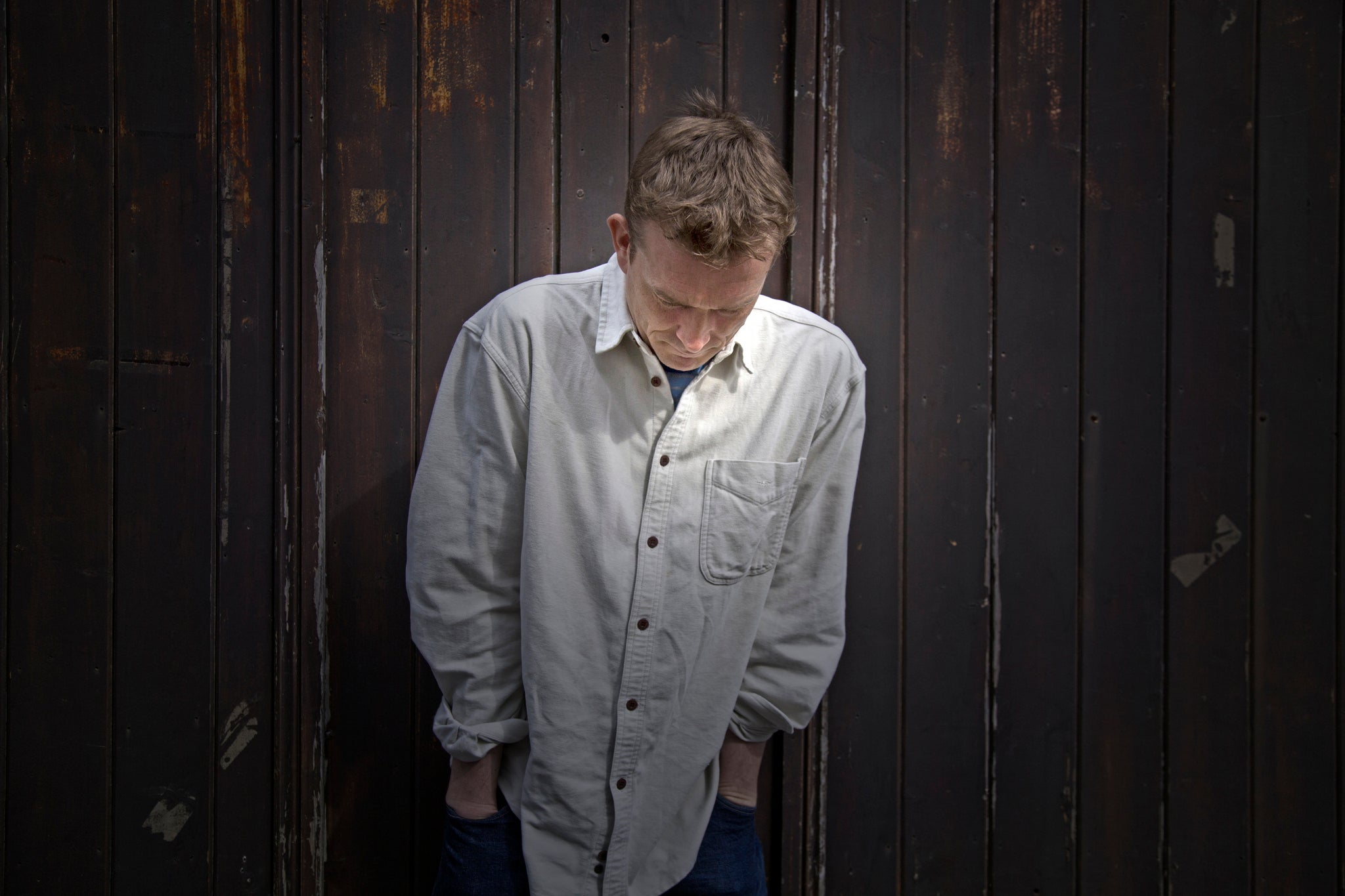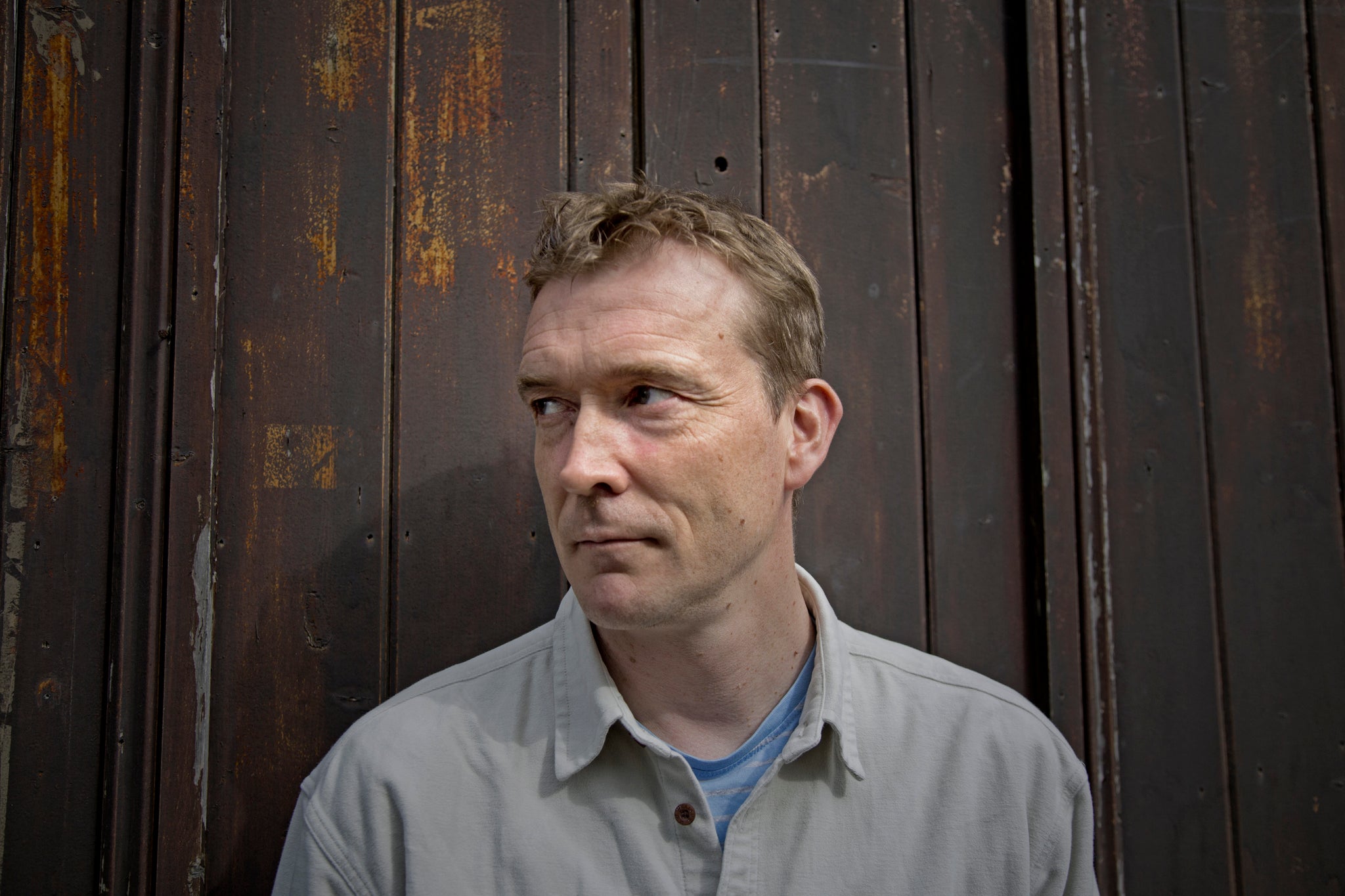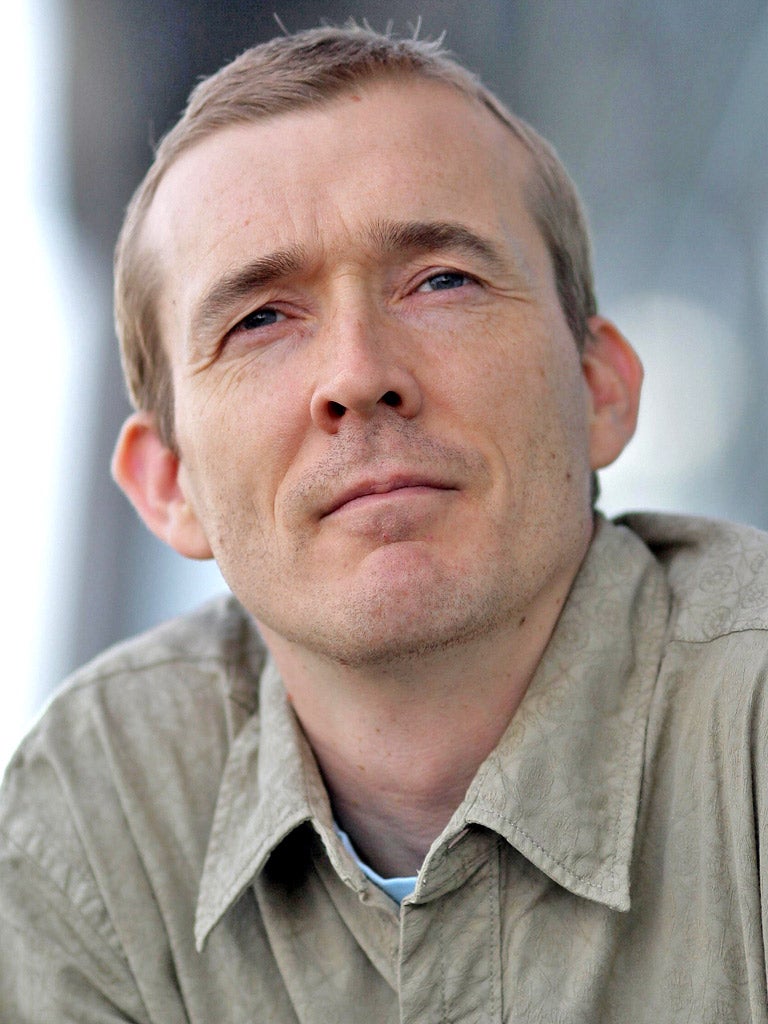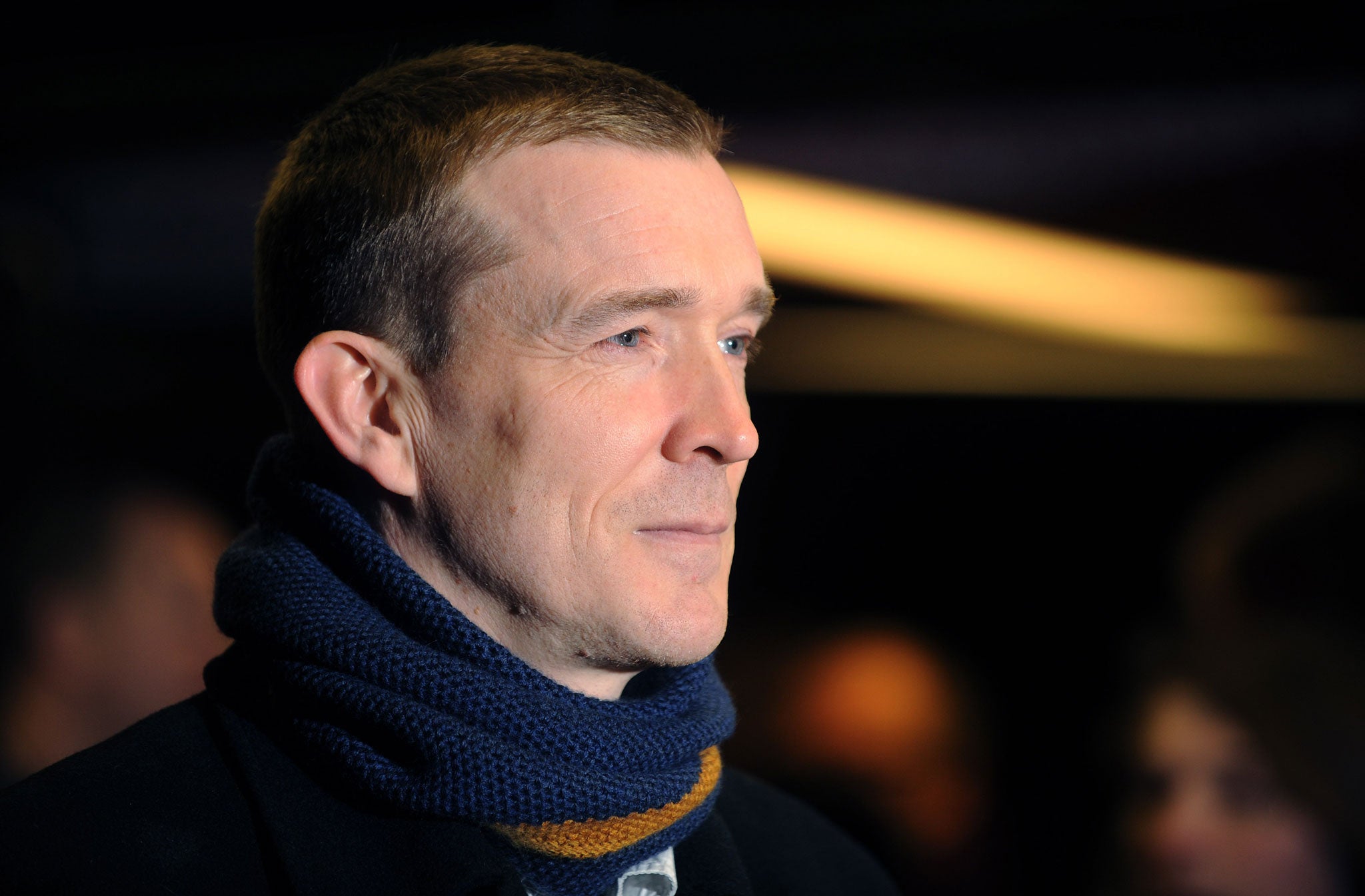David Mitchell interview: 'It's high stakes. Do it wrong and you've got a broken book'
A hot tip to win the Booker Prize, his new book The Bone Clocks is a tour de force of genre-skipping

To meet a writer who travels so gracefully across space, time and genre in – of all stereotypical locations – a Hampstead pub, sounds like a dip into what David Mitchell calls “the sin of cliché”.
So whatever is the author of Cloud Atlas, Ghostwritten and number9dream – among other rhapsodically inventive novels – doing in The Flask, once Kingsley Amis’s local? The answer says a lot about the artist, and the man. At the local Waterstones, Mitchell will later host an event with American writer Tom Barbash, a friend whose writing he admires. Yes, he remains for all his renown famously modest, generous and unaffected – but he is driven as well by a fierce commitment to his craft, to its exponents, and to the precious contract between writer and reader that secures its survival.
When he talks to readers, they often suggest ideas about his books that have not occurred to the author. “However,” he insists, “the point is regularly brilliant, and true. I can learn from those interpretations… It’s not just Twitter-friendly lip service when I say that I like meeting readers, because thoughtful, intelligent ones teach me about my writing. I love that bit.” Formal acclaim has punctuated the progress that began in 1999 with the delirious, planet-spanning sheaf of yarns in his debut Ghostwritten: a Granta “Best of Young British” selection, a Richard and Judy award, the epic film of Cloud Atlas, Booker short- and long-listings – recently, for his sixth novel The Bone Clocks. Yet Mitchell’s gravity-defying imagination has always taken flight from a solid terrain of trust.
He talks about the two-way “leap of faith” that permits his fiction to break through every lock of “brow” as it skips between realism and fantasy, past and future.
“Who cares about ‘brow’? I don’t care,” he says. “Is it one of those books where you’re turning the pages and your glands – all your glands – are being affected?... Your heartbeat is being changed by words about things which aren’t real. Isn’t that amazing? That’s what I want to do. Highbrow, middlebrow, lowbrow – if it’s doing that, great. And if it’s not, I’d rather read something that does.”

From Ghostwritten on, Mitchell has looked like a novelist supremely of, and in, our mashed-up, mercurial times. Here, you felt, was the fiction of the future. Towering talent, formidable originality and sheer entertainment joined with a fluency and confidence that mocked the anxious hierarchies and demarcations of the 20th century. Eclectic, cosmopolitan, the former English teacher in Hiroshima could just about do it all. He fast disproved the grumble of his ageing enfant terrible, Crispin Hershey, in The Bone Clocks – “in publishing it’s easier to change your body than it is to switch genre” – by never having a fixed genre to switch. Once dubbed the “British Murakami”, he has never disowned an early debt to the equally protean Japanese master, but long ago went his own way. He argues that with “brow-lessness or genre-lessness, there’s a big payback… I think that when you put things next to each other, a third thing is made. When we used to make mixtapes for prospective girlfriends in the Eighties, we knew this. And we still do when we make playlists. If you put one of Shostakovich’s Preludes and Fugues next to “Perfect Day” by Lou Reed, a third thing is made that spills over into each. When Howard Hodgkin paints a Kermit-green slash next to an iridescent orange, there is that line – a dark line between the green and the orange that exists only on your optic nerve. Isn’t that cool?”
However airborne and globalised his art, its creator likes to keep firm ground beneath his feet. Born in Southport in 1969, he grew up in Malvern, with two commercial-artist parents who taught him that imagination could pay the bills. He studied literature at Kent University and then (after a spell in Sicily) went to Japan to teach for eight years. After a period back in England, Mitchell moved to West Cork in Ireland, where he lives near Clonakilty with his Japanese wife, Keiko Yoshida, and their son and daughter. The country life, 45 minutes from Cork’s airport (“as long as you’re not stuck behind a tractor”), suits them. “As you get older, you gravitate towards a lifestyle which is in tune with your clearer understanding of who you are. I’m not at ease in large groups of people. I lack the necessary emotional stamina to service a large circle of friends.” He adds, laughing: “It would be unrepresentative to suggest that I’m Grizzly Adams raising Grizzly Adams-type children. We do go to places.”
Last year, he collaborated with his wife on the translation of a Japanese memoir of autism, Naoki Higashida’s The Reason I Jump: their son has the condition. Equally well-known are Mitchell’s childhood ordeals with stammering. Just once or twice, you notice a fleet-footed swerve around some verbal stumbling-block. Here, you grasp, is someone who has had to think long and hard about language in all its glory and treachery. The family speak both English and Japanese at home, in a “70:30 ratio”. Bilingualism, he reflects, “amplifies what a stammer already does, which is to make you very aware that there are many tracks up the mountain of one particular meaning... When you’re a kid and you stammer, you have to evolve this skill for survival in order to avoid the stammer words.” Now, in his bilingual family, “you do live and speak within the fact that human beings in their near-boundless diversity have evolved a whole bunch of different languages”. Add to that the self-awareness of former language teacher, and you have “three types of innocence lost”.
Yet he turned out not as some navel-gazing avant-gardist but a euphoric virtuoso of styles and formats. “I’m too in love with the ballet of plot and character” for minimalism, he admits, “how these things dance with one another – and too nerdily interested in the question of ‘why is Game of Thrones so damned addictive?’...
“Yes,” he says, “I’m interested in language, but it’s the plots and characters in the books that I love that make me think, ‘Ouch! I really want to do that.’ That was true when I was reading Ursula Le Guin as a kid, and it’s true when I’m reading Chekhov, or David Peace, or Michel Faber now.”

After a cleverly customised novel of childhood (Black Swan Green) and a historical novel rooted in a single spot (The Thousand Autumns of Jacob de Zoet), The Bone Clocks returns to the composite and portmanteau narrative of Ghostwritten or Cloud Atlas. Through six separate but braided “novellas” (Mitchell’s term), it both traces the life of heroine Holly Sykes over six decades, from the strife-ridden 1980s to the apocalyptic 2040s, and charts a cosmic battle between two bands (one good, one evil) of immortals. The Horologists reluctantly endure immortality, while the Anchorites’ defiance of death must be fed with the stolen souls of innocents – whom their foes attempt to rescue.
Into the mix Mitchell stirs gleeful literary satire, as past-it wild child Crispin Hershey snarls his way from one overseas festival to another, a hellish trip to the Iraq frontline, a nightmare vision of the “Endarkenment” to come if the oil runs out and the internet crashes, and snapshots from that metaphysical feud in Aboriginal Australia, Tsarist Russia or Manhattan today. For his historical scene-painting, as we move from Holly’s native Gravesend at the time of the miners’ strike to a Brighton wedding party overshadowed by conflict in Iraq, Mitchell feeds symptomatic details of the period into the plot, then brings them to the fore. He detects the same technique in the Communist-era films of Polish director Krzysztof Kieslowski: “By putting it into the background he actually foregrounds it. What a sleight of hand!” In the meantime, we piece together the mind-bending jigsaw of the immortals’ feud. “Fantasy is only as good as the cosmology – the back-story,” he argues. “You actually have to think about the quantum physics of the paranormal to write the constitution the characters then obey. It is an unread constitution but it can’t be an unwritten one”.
A snide review of one of Hershey’s novels gripes that “the fantasy sub-plot... clashes violently with the State of the World pretensions”. But Mitchell himself has always revelled in extreme gear-shifts. “It’s high stakes,” he acknowledges. “If you do them and you get them wrong, you’ve got a broken book. If you do it and you get it right, you might have something that could be half as original as the cover” (a magical tapestry of key images, designed by artist Neal Murren).

The novel builds into a sort of fictional hexagon or “double triptych”. “I write novellas and I combine them,” Mitchell explains, “But they’re my optimum size. I like the length of the arc, the length of the journey. It has that Goldilocks rightness about it for me.” He adds that “by writing about conflict and war and mortality from different viewpoints, from different genres, in a kind of complex overlapping Venn diagram-type way, thoughts and ideas about these themes can be generated – semi-randomly! But just because an idea is a semi-random one doesn’t mean it’s without value. John Cage made a living out of that.”
The Bone Clocks (a derisive name for time-bound humans among the Anchorites) hints that we should love our limits. As with each mortal life, so with the finite resources of our planet. “What is true for an individual is equally true for the civilisation,” Mitchell argues. “We have lifespans and so do civilisations, and if we’re not careful then we can play the part of the terminal disease” that hastens their death. “And we’re not careful. And we are addicted to oil... And our thought is stored on hard drives and these need a network of power stations to keep our civilisation remembering what it knows.”
In its fantasy dimension, The Bone Clocks returns to a favourite Mitchell motif: the transmigration of identities across centuries and continents. You may read this idea of the soul as “a spiritual memory-stick in search of a corporeal hard drive” as a metaphor for the wonder of human connection and affinity. But how far does he believe in the soul’s immortality? “I would like to believe in its possibility.” All the same, “is there any point in having strong, defended, entrenched position about things we cannot know? Perhaps there isn’t.” I ask about Buddhism. For Mitchell, “the philosophy itself is the only one that does not ask me to believe things that the rational part of my mind finds risible.” So he treats its ancient narratives as “stories” but still practises meditation: “Buddhism doesn’t really care… and so I meditate and I find it really helpful, and centring. It’s like a power-nap that doesn’t leave you feeling remotely groggy.”
After we share our questing scepticism, Mitchell decides that, “for both of us, the Scully trumps the Mulder” (agents from The X-Files: I can’t credit his claim that he’s no good at the pop-culture questions in pub quizzes). That leaves a solid belief in the mutual enchantments of fiction. “I choose to have faith in the reader,” he affirms, “that there they’re not very different to me.” Hence the creative seven-league boots that let Mitchell leap, for instance, from “a piece of Battle-of-Fallujah social realism seen by a war junkie... to a climactic battle in a cathedral in the sky that Steven Spielberg might have directed”. When the reader makes such a giant “leap of faith” and yet lands well, “Isn’t that a great feeling? Isn’t that a great adrenalin rush? Because I know what the payback is as a reader, it encourages me – it goads me – into wanting to do it as a writer.”
David Mitchell’s ‘The Bone Clocks’ is published by Sceptre (£20)
Join our commenting forum
Join thought-provoking conversations, follow other Independent readers and see their replies
Comments